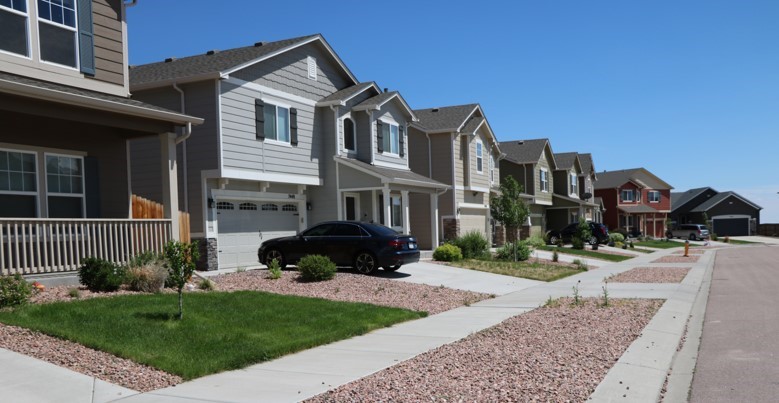Is turf grass prohibition the answer to Colorado’s water woes? Many think so. It’s an easy button for legislators to force turf out of cities. It’s an easy button for East Slope water providers to demonstrate that they are doing their part. And it’s an easy button for West Slope entities to demand it as a minimum requirement to engage in water conversations. Why are we sounding the alarm about turf when this is a conversation about saving water—the best methods, the best savings and in the best interests of Coloradans?
Outdoor watering accounts for about 3% of all water use across Colorado. Reducing that use is important and other actions are equally, if not more, impactful. It’s also important to note that water conservation includes protecting the built landscape in cities and towns. Colorado Springs Utilities is doing just that by implementing a holistic water conservation approach to arrive at resilient landscape solutions.
In this maelstrom of water discussions and amidst our growing populations, finding water solutions is hard. Let’s start with some myth busting:
Myth #1: Colorado will realize the same water savings from turf removal that other Western states like Nevada and Arizona have experienced.
Reality: Colorado Front Range cities require an average of 25 inches of supplemental irrigation to keep turf grass healthy while Nevada requires an average of 65 inches and Arizona an average of 63 inches.
Myth #2: Turf grass removal is a source of water supply.
Reality: If done in significant quantities, turf replacement can stretch water supplies in our cities, but removing turf will not eliminate the need for more water in our cities and it’s not going to leave more water in our rivers. Most importantly, to maintain the economic vitality of those cities, turf must be replaced with native or drought tolerant vegetation, which still needs supplemental irrigation in urban environments.
Myth #3: Banning turf grass will automatically ensure that beautiful, water-wise landscapes are planted in their place.
Reality: Moving to thriving, water-wise landscapes is a costly effort. Economics and landscape industry knowledge will dictate what is installed in these areas, and currently the predominant alternatives are rock or rock and very few living plants. These alternatives decrease the economic vitality and quality of life of more than half Colorado’s population who live in urban areas. Most concerning, trees cannot thrive in these landscapes, resulting in more desperate heat islands in low-income communities that have greater than 15% less of tree cover.

Successful native grass conversion of low-use turf area in local park. Courtesy Colorado Springs Utilities
Successful water conservation programming will continue to require a robust portfolio of actions and methods that have yielded Front Range cities a 40% reduction in water use since 2002. These programs work together to ensure consistent and steady savings.
The stakes are high, which has energized efforts to arrive at solutions that work for communities and our state. We want living landscapes that are:
- economical to install;
- keep property values high;
- ensure water-wise plants can thrive with just one day of supplemental watering per week; and
- allow trees to thrive, especially in areas where we need more of them.

First-year turf conversion to native grass mix in residential backyard. Courtesy Colorado Springs Utilities
Installing native grass as an alternative to turf grass is an important option for our communities, and it’s just one part of the holistic solution. Please join us in our efforts—it’s going to take broad engagement to be successful. There is no easy button, but together we can reach exciting alternatives that ensure lower outdoor water use and vibrant communities for all Coloradans.

Julia Gallucci is the water conservation supervisor at Colorado Springs Utilities, responsible for supporting implementation of the Water Efficiency Plan to reach long-term savings of 10,000 – 11,000 acre-feet by 2070 while supporting the vibrancy and economic vitality of our community. She can be reached at jgallucci@csu.org.


 Print
Print